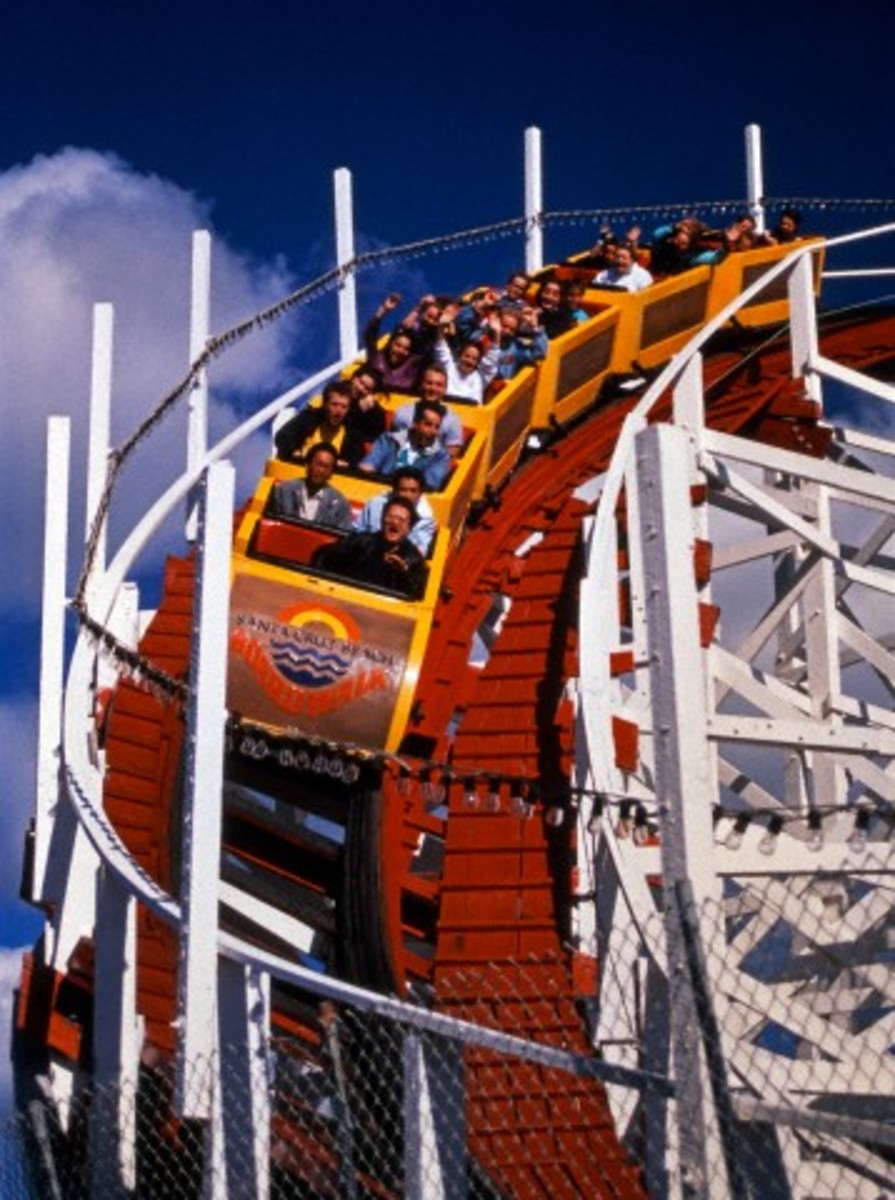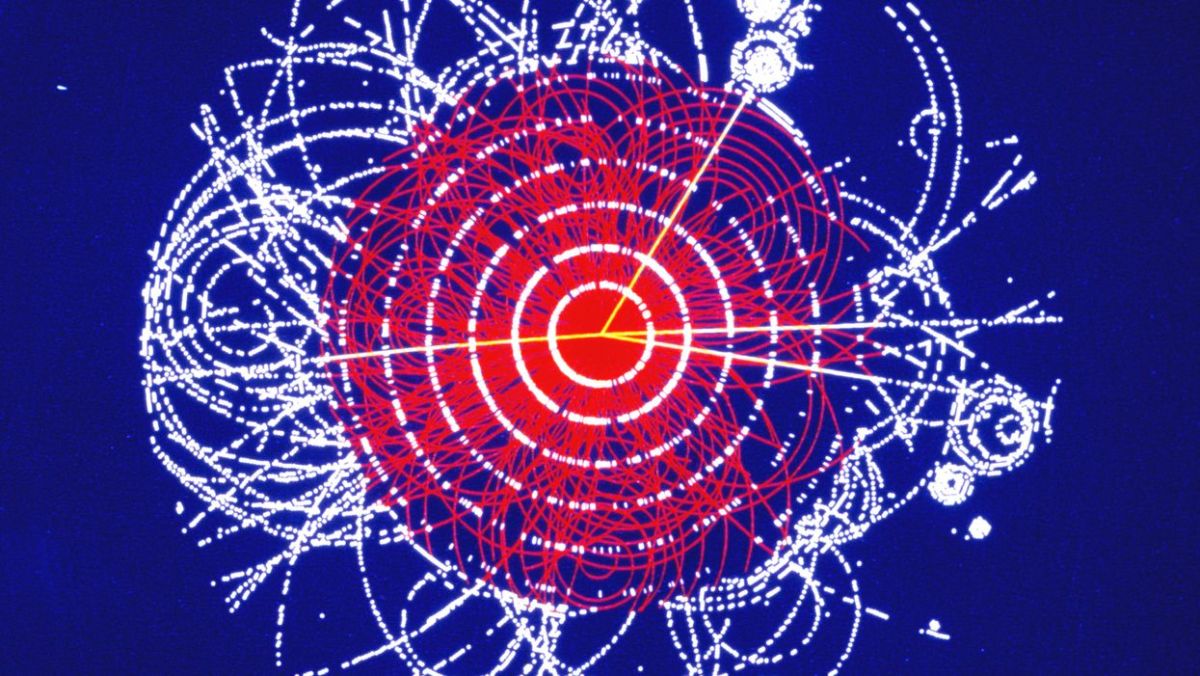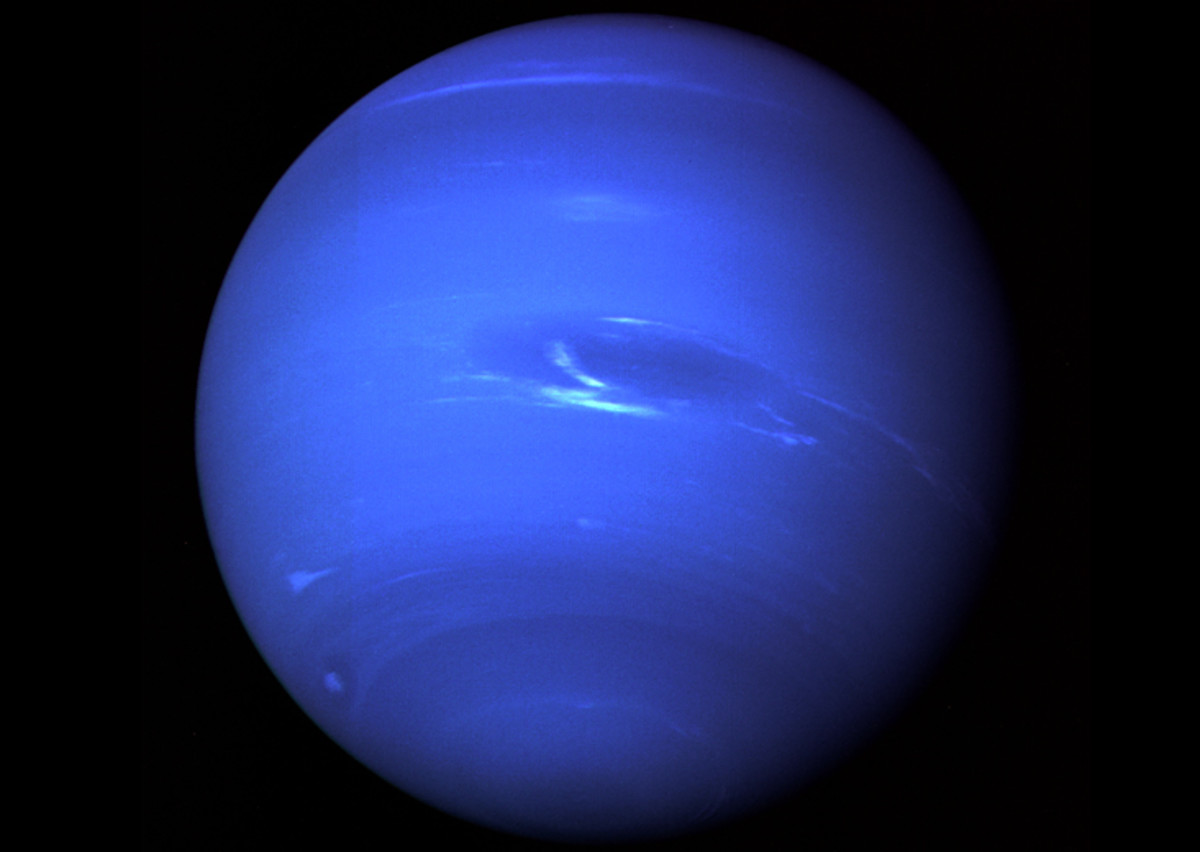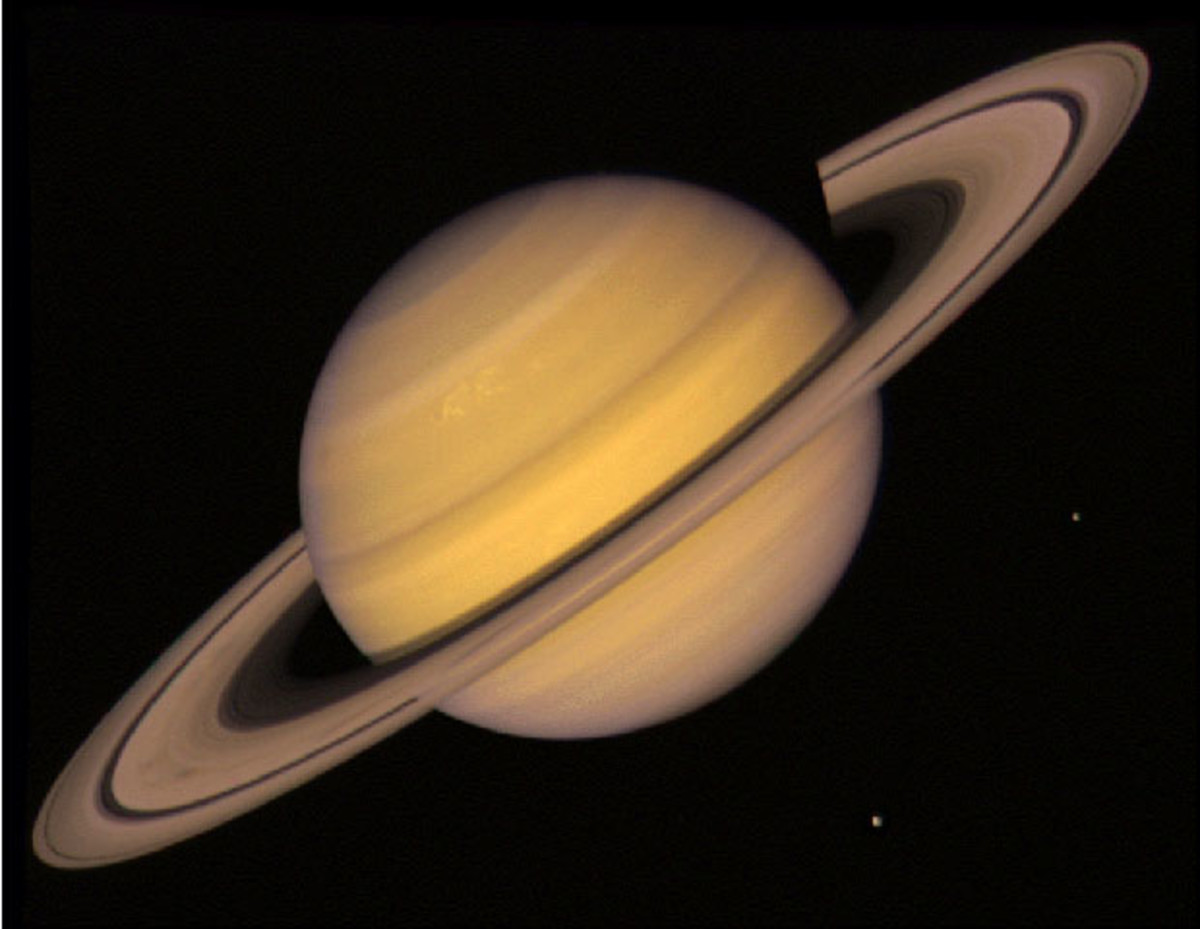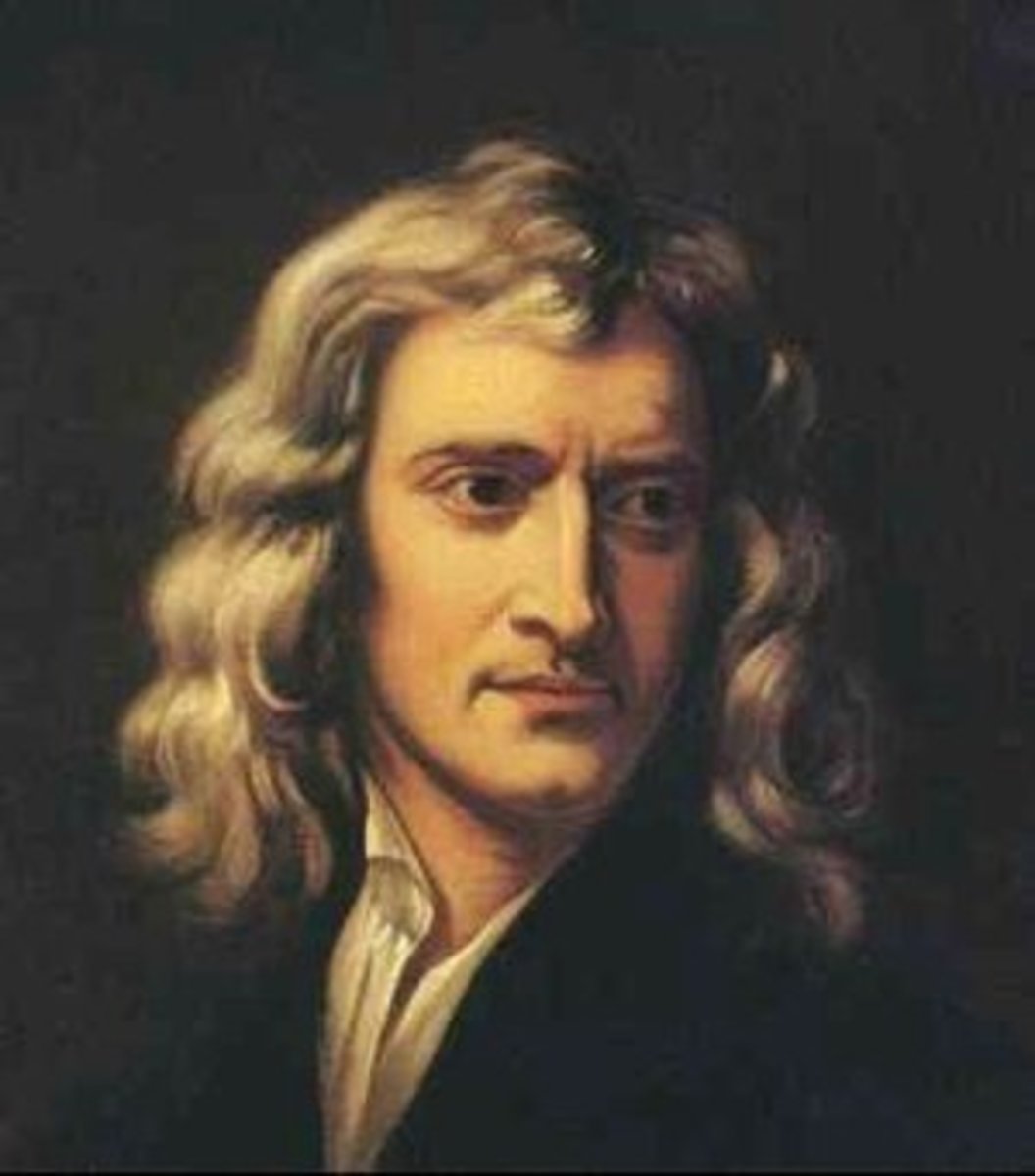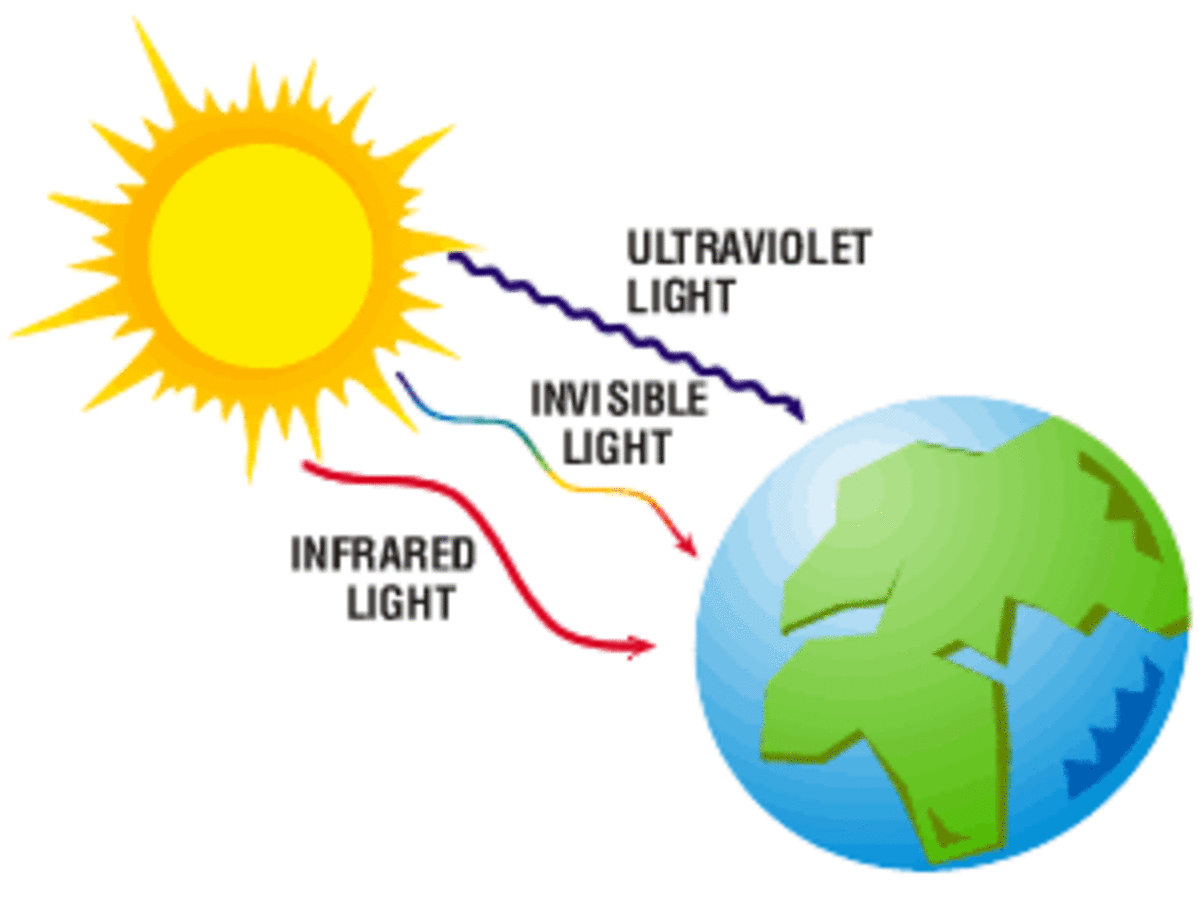To Know the Truth
In a world of hypotheses, theories, speculation and lies, a sceptical, rigorous and objective approach is best to discern the real from mere illusion.
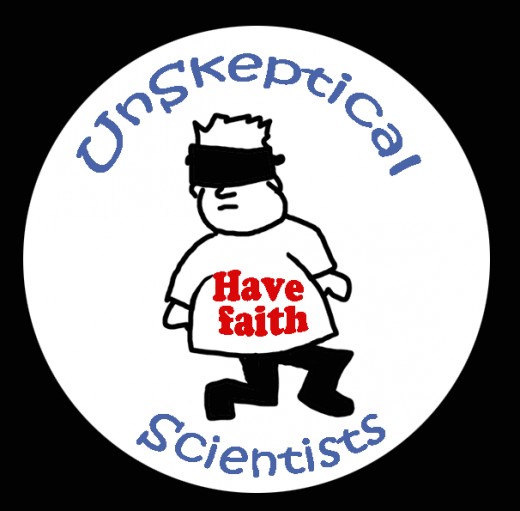
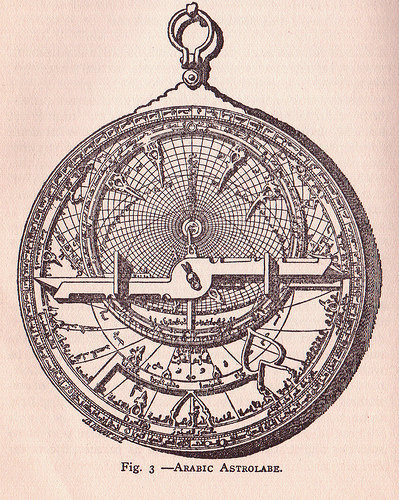
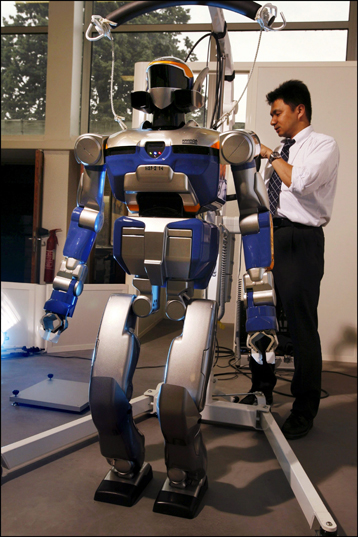


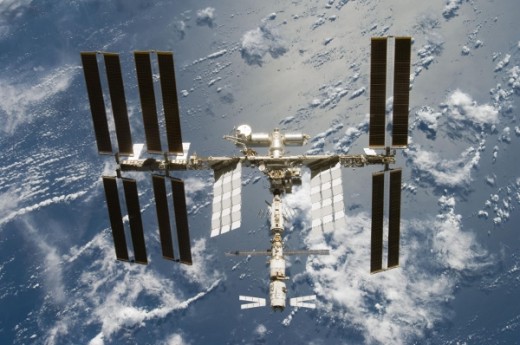
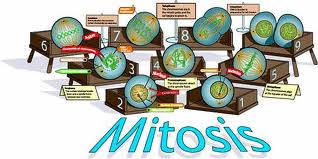

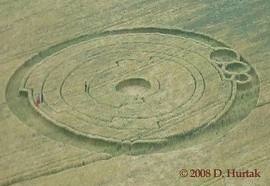
Understanding fundamental laws of reality by direct experience
In an alienated, atomized, class divided world of monopoly capitalism versus the super exploited majority, we are left with confusion, antitrust, alienation, ignorance and hype. Science as dictated by the bottom line certainly has not proven itself trustworthy as corruption and collusion with money oriented dogma dictated as to what is regarded as scientific fact and what is mere myth and lies. Nowhere is this more exemplified than in the diametrically opposed schools that are for and against global warming due to the burning of fossil fuels. Further, many of us are aware of the stated contrary health effects of eating or not eating certain types of food and this can be on any type such as wine, chocolate and meat. We are told of scientific studies that tell of the benefit or detriment of wine or beer. Then there is the ever-changing news of the benefits and risks of certain fats. All this leaves people confused. Add to this the wonder cures for diseases that somehow never reach the people and are forgotten, supplanted by yet another wonder cure. Science in some instances sounds more like a snake oil medicine show in a cheap travelling carnival, promising miracles and delivering disappointment for a high price. The prevailing attitude demonstrated in certain aspects of profit motivated science has thrown a pall of doubt on all of science. This has fed the return to superstition, medievalism and fantastic religion. Modern science has been thrown into confusion by at least three differing schools of thought all locked in combat with each other, shredding each others throats in mutual “social Darwinist” fashion. Some “scientists” will even resort to outright lies and manipulation in order to trick and discredit opponents. Science is after all, a means of rigorous investigation, which unfortunately is run by corrupt individuals and organizations, seeking maximum profit at any cost. Science thus blocks innovation and takes a conservative stance, refusing to adapt to new understanding even in the face of observational evidence and demonstrated, repeatable experiment. Almost all advances come from outside of particular disciplines as a result. Almost all new discovery and understanding is rigorously opposed until much later in history. The money oriented and conservative scientific community have supplanted the religious inquisition of old. As an example, I. Velikovsky stated from his researches what is now accepted due to the work of Levy and Shoemaker. Nikola Tesla is the true father of wireless transmission of power, but this was suppressed in the main until the advent of the cellphone and computer internet where a profit could be turned. Until then, we had to link with wires, so a user fee could be “legally and reasonably” be charged. But the latter day “discoverers” were not ridiculed, hounded relentlessly and barred from the scientific community, as was the former. These are but some examples among many hundreds in history. Historically, people have even been burnt at the stake for pursuing science outside of the permission of the holy see. To thus find the truth, all too sad to say, one needs to look outside of the established scientific establishment. It is possible to establish the truth for ones self. You do not need to be a qualified scientist, only follow a few established rules consistently and you can determine the truth for yourself.
We can begin with a simple enough foundation and build on that to the more complex. In our journey, we will encounter such simple things as the curvature of the Earth. Then we will explore such things as special relativity and quantum discreteness. We will see how these things affect and organist everything on levels that are easy to observe.
There is the materialist, mechanistic view that is principally opposed to the so-called "new wave" holistic science, often regarded as idealistic and obscurantist. Then there is a third school that is regarded as charlatan and thus suspect by both sides and disrepute as being fringe lunatic, bordering on "magic". This school looks to people like Nikola Tesla, Velekovsky, Gauquelin and others into arcane views and technology. This confusion, the rush to publish, the embarrassment of public error are what is primarily the stimulus for the turn to religion and superstition, which of itself has proven susceptible to historic and contemporary corruption. Religion is so rife with corruption and the lies of practitioners, there is little wonder why atheism evolved in the first place. There is a way to come to the truth by oneself and thus finding where modern science parallels what one can find through direct experience. In the face of "assume one is being lied to unless direct proof exists to the contrary", a way to find the truth for one's self is of paramount importance. This will then serve as a guide to who is telling the truth and who is embellishing it or lying. One need not be a professional scientist to find the truth, just a good observer and a methodical and rigorous experimenter.
Take the case of gravity. We may not know how it works, but we do know that it does work and that is where we can start. We are told that cosmic bodies attract one another by gravity and that the larger the body, the greater the gravitational force it has and that attracts it by other bodies. This is all well and fine if you could personally visit other planets to find out yourself. Further, why must gravity be an attractive force at all? We don’t actually know for sure at this juncture in history! There is thankfully, an easier way to deal with the force, with some qualification. Any worker in a sweatshop knows instantly the import of gravity on various sized bodies. They ought to; they are forced to carry backbreaking loads for long stretches with little return on their effort. All one has to do to feel the effects of increased gravity on a larger mass, is to find and lift a heavy object where one stands and carry it around a while. In the act of standing, grasping and then lifting the heavy object, ones total mass with the carried object becomes greater and thus the feeling of gravity's crush is intensified. Thus, one can prove one of Newton's basic principles concerning gravity and corroborating Newton in the process. That is;
Fg = MmG/r2 (1)
Where Fg is the total gravitational force
M is the major mass
m is the minor mass
r is the radius between the two centers
and G is the gravitational constant
NOTE: The gravitational constant is subject to some controversy when scrutinized closely, but is good for general purposes and the limits with which we are dealing. In the above case, G is not a vector, so in effect can operate either as a pull or a push. It is merely an expression of a scalar and not a modulus, terms used to describe the two parts of a vector.
This experiencing of all other fundamental laws and principles can be similarly proven or disproved by rigging these types of experiments in daily experience. All that is required is a little thought and very simple tools if required. Hereafter, there is no attempt to prove theorems through higher math. Where it is applicable to do so, others who are mentioned and vindicated by personal analysis and observation, have already developed the math. To become involved with a treatise on higher mathematics would be needlessly redundant. However, if we find some differences in reality that differ from mathematical definition, it would be good to develop the appropriate math to fit reality. It should be kept in mind that an experience in a particular setting may not be transferable to another circumstance involving different settings, forces, etc. The scope of this work is to prove or disprove modern science through direct personal experience. Here then are some suggestions in our hunt for truth..
Here is another case for consideration. This time we'll look at the ideas of momentum and inertia. Inertia describes a circumstance where a body will remain at rest until it is caused to move by an external force. Every worker knows what this is about. Any piece of machinery, bolt of fabric, stump, log, rock, building material, drum of chemicals or boxes of other goods will stay put unless someone puts tremendous effort into lifting, pushing and moving it. So gravity keeps the object fixed to the spot and the mass of the object requires force to impel it in any direction. The opposite slant of the same law states that any body in motion will tend to move in a constant speed and in a straight line unless acted upon by an external unbalancing force. Once a worker has a large piano moving on a dolly, that piano will keep on going unless a force applied to it deflecting its course or brings it to a halt. These opposites are really an expression of the same concept insofar as it takes an external force to get something moving, to change its direction of travel or to stop it. It matters little if that force is gravity, muscle power or electrical energy for that matter, as long as it is sufficient to overcome inertia, momentum and gravity already involved in the mass. There is the further consideration of friction that tends to hold fast objects being dragged or skidded across a rough surface, which is something that will be analyzed later. With the interaction of energy applied to an object to induce momentum or motion, the object acts oppositely with an equal and opposite reaction. This is why the words "imbalance of force" is used to dialectically describe the interactive process of inducing motion or stasis. All of this can be calculated when one knows the weight of the object, the amount of force applied and other factors like gravity and friction are accounted for. In any event however, the important idea is that energy must be transferred to any object in stasis or motion to overcome inertia and momentum. There is the further consideration of moving or stopping an object in an upward or downward direction. This is where gravity figures in the application of energy to change inertial or momentum states. Gravity alone is a sufficient force to move virtually any object we would care to interact with, whether that is to change momentum by speeding or slowing down objects or increase inertia. Everyone who works around heavy objects and machinery instantly knows the import of what science states through formulae. Next time that you wish to move some furniture on dollies or on casters on a variety of floor surfaces and whether or not ramps or stairs are involved, consider what has been stated and how it applies to your experience. If your experience vindicates what others have stated in the works of science, then this particular experience dealing with inertia; the tendency to remain at rest; and momentum; the tendency to keep going in a particular direction, have been proven correct. In this case Newton appears to have been truthful in his analysis and statements and his theorems can be relied on as an accurate description of bodies at rest or in motion. The vindication of Isaac Newton's (1642 - 1727) first law of motion forms a foundation upon which we can build a world-view, again on personal experience. For a reference, His work Philosopiae naturalis principia mathematica is a good source reference.
Let us now look at the concepts of mass and density. Everyone knows that 50 kg of feathers weighs as much as 50 kg of lead shot. On the other hand 25 kg of lead shot would be easier to lug across the factory floor than 50 kg of the same material. One has twice as much mass or weight as the other. For most considerations, we can consider mass as weight, although there are some technical differences to be dealt with later. Although 50 kg of feathers have the same mass as 50 kg of lead shot in the same locale, there is a difference by way of density. Density is a measure of how much mass or weight something has in a fixed and consistent volume. It should be obvious that the same volume of feathers is much lighter in weight than the same volume of lead shot. This is a difference in density. Density becomes very important when one realizes the awkwardness involved in transporting 50 kg of feathers compared with relatively less awkwardness involved with moving 50 kg of lead shot around. In the cosmos, we find that air is less dense than water and stones usually more dense than water; especially if they sink when placed in water. Density is important in dealing with concepts of gravity as well. The denser something is, the more it interacts with gravity. When Galileo conducted his experiment at the Tower of Pisa in Italy, he discovered for the most part that feathers and cannon balls fell to the earth at the same speed within a vacuum chamber. Why should something so devoid of density like a feather, fall as fast as something with such great density as a cannon ball. The answer lies within the Earth itself. Compared to the earth, a feather and a cannon ball are not much different quantities of material. Although the feather is very puffy and the cannon ball very hard and dense by our observation at the human scale, to the earth's gravitational field, there is little appreciable difference, although a difference nonetheless. The difference between feathers and cannon balls in relation to the Earth can be described as vanishingly small. On closer inspection, one can find a difference between the fall of a feather and cannon ball in a vacuum, but in Galileo's day, the tools for such accurate observation were unavailable, so to him under the context of his observation, there was no difference. In the context of the relative size of the earth compared to most things we handle, there is an appreciable gravitational constant. Even by today’s ability to measure the small, to measure such a difference between feathers and cannon balls would push the envelope of measuring ability.
However, there exists one curious situation where you can measure this effect directly. It exists in the context of the pendulum of London’s clock tower. The pendulum is routinely sped up or slowed down by the addition or subtraction of British pennies. By the addition of pennies, the clock keeper speeds up the time keeping by seconds on the day. Conversely, by subtracting pennies, the time can be slowed by seconds on the day. This is done in order to keep the time accurate. Admittedly, there are other factors involved, like Lunar tidal influences the temperature on the length of the pendulum and even the barometric pressure. Despite these other considerations, it is interesting that subtle differences of mass are affected differently by the Earth’s gravity. One only needs a long enough time and a sensitive enough measure to see the vanishingly small differences. As an interesting note, in the early days of the space program where NASA was tracking satellites, they would routinely lose them over the Indian Ocean. It turned out that Earth is a gravitationally uneven body and these satellites betrayed the fact by speeding up, slowing down and veering off course and getting lost.
A large body made of feathers equal in size to a large body of lead would interact less strongly with gravity than the lead body. Cosmologists know this by observing the movements of moons around different sized planets and thus can reverse calculate the gravitational force for each one. It so happens that there is much variability.
The difference between mass and weight can be appreciated in the following experiment if one rigs it so as to observe the results. Given an elevator, a spring scale, a balance beam scale and something fairly heavy like two 5kg packages of lead shot, one can proceed. It matters little if the elevator is initiating a move upwards or a move downwards. The important key here is to take your observations at the moment that the elevator begins to move. In other words, the elevator must either be accelerating from a stop or to a stop. With a 5 kg lead package on the bathroom scale and a 5 kg package of lead on the beam scale watch what happens when the elevator starts to move. Be sure that the two packages are as close to being equal as you can get. The bathroom spring scale will register a change, the beam scale will not. Everything is under the influence of inertia and momentum at all times. The bathroom scale will actually detect changes of momentum and inertia through relative changes in weight. The beam scale will register no such change. If the gravitational influence were changed, the 5 kg of lead would appear to weigh more or less on the spring scale without changing in volume. However, on the beam scale, no observable change would occur. No matter what the gravitational influence became. The mass is fixed to volume of lead. The difference then is that mass in a fixed non-changing volume is fixed, but weight is not. Indeed, weight will fluctuate slightly with the passage of the moon through the sky over any object. This is what drives the ocean tides. People have known for a long time that the tides and moon were linked, but not always knowing what the mechanism was. So now we know that ideas of mass and density have been accurately defined. Once again Isaac Newton was for our purposes under these limits, is correct.
Remembering the elevator experiment, if you were aware of other influences, you would have detected an increased weightiness or lightness on your own body. This was the result of the elevator overcoming our own inertia and the interaction with the gravitational influence on your body. This is technically called acceleration. Acceleration occurs as a direct result of the change in momentum or inertia due primarily to gravitational influences and force applied upon the mass being accelerated.
Mass has another interesting aspect, and that is that it increases as the square of its relative motion. We’ll deal with relative motion later, but let’s look at the dynamic increase in mass due to motion. If you toss a bullet at a wooden target, it’ll likely bounce off without damaging the target. If on the other hand, you fire it from a rife, it will go right through the same target. The difference is that of rest mass versus mass in motion and is related to inertia and momentum. You can appreciate mass at rest versus in motion when you are sitting or moving. By sitting on a couch watching football, you’re not likely to feel anything hitting you or by running into anything at full speed. On the other hand, if you’re playing football and smack into someone during the game at the full run, you’re going to feel it. This is the difference between rest mass and moving mass. You’re more likely to be injured while in motion relative to other people or things, than if you're stationary. In fact, the faster you go, the more severe the injury of collision will be. The squaring of mass in relation to velocity is something that will require some complicated setting up, rigorous measuring and then analysis with statistical mathematics and equations dealing with force, mass, velocity and acceleration.
However, you can determine that mass has a direction. Yes, mass does have a direction, commonly called a vector modulus in the terminology. You’re not likely to find that piece of information in existing texts. To prove that mass does have a direction, try this experiment. The next time you’re on a family picnic and the three legged race comes up, join in the fun and observe what’s going on between you and the partner tied to you. Relative to each other, you’re going to find that your masses are close to being zero in relation to each other. Just keep in good rhythmic step and maintain the same velocity. Your masses in relation to the gravity of the Earth are oriented to the center of the planet and vary according to the amount of matter that makes up each of you in the mass gravity relationship detailed above. Your mean mass of motion will be in the specific direction you are both heading. In relation to the football collision where the modulus of the masses are in vectors that cross one another instead of being parallel as in the three legged race, there is an appreciable difference. One is close as practical to being zero, the other is anything but zero, as the post collision injuries will attest. The direction of mass helps to explain an aspect of Galileo’s thought experiment of the moving horse rider and the ball. All these factors operate together to create the phenomena we call mass. We’ll look at Galileo’s though experiment in more detail later.
Consider for a moment, some of the arguments presented by optics, which deals with the phenomena of light and the path at takes from point of origin and point of terminus. On the top of everyday experience, light appears to travel in straight lines, yet, when probed a little deeper, we find that this is not so, mainly due to the interference of the mediums through which it travels. I cite to you two examples of optical illusion or transformation, proving that light can be curved. The first is what any aboriginal person is familiar with when spear fishing. Sticking the spear in calm water appears to bend the spear, particularly when viewed at an angle other than perpendicular to the waters surface. The second is the phenomena of mirage cause by the uneven heating of the atmosphere. Most people who have had occasion to travel across desserts or wide expanses of a calm ocean are familiar with the optical tricks of water appearing where is none and dry land suspended above the horizon with no apparent earthly connection. These examples prove that light must be bent between the object sighted and the viewer. Continuing in this line of investigation, we can discover that light is made up of different colours of light, or different "frequencies" as technicians like to point out. Consider the rainbow before or after a rain, or you can even set up your own "rainbow" by turning on or observing a fine mist sprinkler on a lawn. By positioning yourself in the right location, usually with the sun somewhere behind you, you will see a "rainbow". Now the colours will always occur with the red on the outside of the circular arc and that is always followed in a particular sequence of colours, being, red, orange, yellow, yellow/green, green, blue/green, blue and indigo. The indigo colour is always on the inside of the circular arc. Sometimes you might even see a double rainbow, with one positioned inside the other with the same sequence of colours. The water droplets in the mist are doing three things. They are reflecting the light back to you. They are splitting the light into the various colours and they are telling you the protocol of the colour spectrum. Looking at the experiment a little more deeply, there is a further mystery revealed. The largest frequencies are reflected at the outside of the rainbow arc and the smallest at the inside of the arc. How to determine the frequencies and why this is so is a matter for later investigation as we build a more sophisticated understanding and ways to observe this. This will involve a little mathematics involving angles and distance. There is one more thing that we can experience directly from the sun. That is radiant heat. This we experience merely by standing or lying in the summer sun on the beach. We need to take care, or otherwise, we will literally be slow cooked by the sun.
This brings us to our next point, and that is the nature of heat and cold. Everyone knows that sufficient heat will boil water and in conditions of insufficient heat, water freezes. Heat is transmitted a number of ways; by radiation, conduction and turbulence. The radiation method is already familiar to us when we recline in the summer sun and work on that tan. Too much of this can cause us to suffer "heat prostration" or hypothermia where the body temperature is increased beyond the bodies capability to effectively maintain the right temperature. Usually, we seek shade or some way to vent this heat like going swimming. The conductive heat experiment is simple enough. Taking a metal object like a spoon or fork, place it in a pot of something that is boiling for a long enough time and when you touch it, you may not be able to grasp it because the handle has become too hot. In fact, to eliminate suspicions of it being heated by the rising steam of the stew or soup, you may use something with a very long handle made entirely of metal. Hold the handle for sufficient time until you sense the accumulating heat. Be careful though, because it can happen surprisingly quickly. If the air around your hand is relatively cool, but you feel the handle warming quickly, you know that heat is being conducted along the handle from the end that is immersed in the soup or stew. The third way that heat moves is through turbulence of convection. This is most visible in water that is in a rolling boil. The greatest heat near the element is seeking to dissipate into the water and the temperature gradient literally causes the water to be stirred rapidly as the temperature gradient between red-hot burner and room temperature air attempts to find a homogenous balance between extremes. This energy gradient is a very important piece of information that can be observed, because, energy gradients are responsible for all complex phenomena and dynamic change we can see. Another way to see heat turbulence is to watch the air over a tarmac on a hot day. You may be able to discern a wavy quality to the air, because the light is being shifted and bent by columns of heated air mixing with cooler air. Remember what was said before about bending light? This is another example and it ties heat in with light bending. You can sense this set up by feeling the heat on the pavement and the cooler air several feet up. You may also want to try an experiment with a lightweight, small paper bag on a particularly hot day on the tarmac. With the bag inverted open end down close to the tarmac without obscuring the sun with your body, hold it there for a minute and then let it go. It should rise for a foot or two before coming back down. The hot air is rising to be replaced with cooler air in a hot/cool air recycling process. The hot and cool air columns that are mixing are what cause the shimmering effect when you look through it. There is a peculiar relationship once more emphasized between heat and light. Apparently, the heat and cold juxtaposition of mixing air currents or columns causes light to bend, creating the wavy effect that you can see. It is like looking at the bottom of a pool of wavy water, seeing the distortion of the bottom rocks, shimmering light patterns, only not as pronounced. We may be able to use heat to analyze light and visa versa as a consequence. We'll look into possibilities of this.
Have you ever walked across a carpeted floor on a cold dry day only to get a jolting shock just as soon as you touched a doorknob or metal stair railing. You're not alone. In childhood, you probably were told to rub balloons in your hair or wool sweater and then stuck them to the wall of the room. In fact you can take two balloons on stings. Rub both of them thoroughly in your hair or on a favourite mohair sweater. Hold them up by the strings and see what happens. The balloons will not come together to touch if they have been sufficiently charged. Yet, both of them will stick to the same wall. Welcome to the world of static electrical charge. On some days, you can even generate considerable sparks that can be visible to the naked eye in a darkened area. Imagine now on a summer day when a thunderstorm is blowing in. Before the storm, it is hot and muggy. After it blows through, the air is cool and refreshing. Within the context of the thunderstorm, there is sometimes a considerable temperature gradient. Just within the context of your own electrostatic experiments you've seen how charges can attract and repel things. You've also seen that you can even generate miniature replicas of lightning. A thunderstorm is much larger than a human being, so the same forces generated by shifting temperature gradients, much like the air columns seen over a hot tarmac, are much more magnified. Rushing air of different temperatures swirl through the trees and clouds, building huge electrostatic charges in both areas. When sufficient charge is built, and distance relationships are close enough a discharge by way of electrostatic balance occurs and manifests as lightening. Just as the miniature lightning from your fingertips crackles or snaps audibly when it discharges, so thunder is created when a lightening bolt equalizes charges between the earth and clouds. There is another observation that comes of all this. Electrical charge accumulates due to changes in the environment. The movement of a human body is sufficient under the right circumstances to build up an electric charge of several hundred volts. It does not kill, because it is "static" electricity, moving only when a body of less or opposite charge is encountered. In fact, a body can accumulate several hundred thousand volts of this kind of electricity without harm. A thunderstorm represents a rather violent change in the weather environment by way of air mass movement, so the charges built and released are substantially higher. In order for a bolt of lightening to arc from cloud to treetop requires a charge of several tens of millions of volts. Knowing that electricity can be generated through movement, we can devise machines to generate it. The reverse is also true insofar as electricity can move objects since by dialectical understanding that these forces interpenetrate each other and are bi-directional.
We know that electricity can create light. We just have to make our own sparks as we have seen naturally as described earlier, to prove it. Electricity can also generate heat and visa versa. Take your hands and rub them quickly together and you will feel heat build up. Since there is a slight resistance between left and right hands, the heat builds through the friction between the palms. When we rub a balloon in our hair, the friction generates heat, but it is so subtle, we never feel it. Remembering the hot to cool air before and after a thunderstorm, we can further appreciate the hot/cold/electrical connection. There is another experiment with two metal wires of different metals joined together at one end that are placed in a candle flame. If it is done carefully, with the two free ends separated by just a tiny distance, you may see a tiny spark between the ends. Again, one sees a connection between light, heat and electricity. Now the reverse is true. In the case of dry thunderstorms, many a forest fire has been ignited by lightning strikes, sometimes by the dozens by a single storm. Remembering what was stated about fire in Dialectics, we can appreciate the heat in the electricity. Mankind has gone on to harness this force by using movement, but this is done using magnets, which brings us to the next step in building an arcana of experiential knowledge of natural science
Obtain a battery, preferably one of the large square lantern kind, a long stout wire and a boy scouts compass. You may want to have a small flash light bulb for your circuit experiment as well to prove that there is something going on besides your imagination. Build a circuit between the "-" (negative) post, to the bulb and end it at the "+" (positive) post. If the bulb lights, you're ready. Take a part of the wire and hold it over the compass and move it around. You will notice that the compass needle will swing from true magnetic north. Thus you can see a relationship between "moving" electricity and magnetism. This law also is bidirectional. A large magnet can be moved over a loop circuit containing nothing but a wire and a flashlight bulb. Under dark enough conditions, you may get the bulb to glow faintly when the magnet passes over the wire. The stronger the magnet is, the better. This is the basic principle behind all electrical generators. Realizing that the earth is also like a big magnet, you may be able to figure out a way to generate electricity with just some loops of wire. Maxwell used similar methods to determine the interrelation of electricity and magnetism. Out of this he derived his now famous four equations that were the backbone of Einstein's thinking on relativity. These same equations also laid the groundwork for Tesla's many successes in harnessing electrical power still used in A/C circuits and motors and the wireless transmission of power by using resonance.
On the biological front, one can experiment and observe. Consider the source of modern genetics. It was nothing more than the breeding of different pea plants and noting the colour of the flowers of offspring when one mixed parent plants. From this humble beginning in a monastery by Gregor Mendelssohn and Charles Darwin's observations on the Galapagos Islands, was born modern genetics. You can do these things too, especially if you have a garden or have had the pleasure of breeding dogs or cats. There are definite patterns that are passed on from generation to generation. Certain desirable traits can be selected for and enhanced from generation to generation. When one sees all the variety of dogs that now exist, this is a testament to the scientific breeding for different desirable traits. This evidence stands as a testament to evolution, even at the manipulation of the hand of man. There is plenty of evidence for the observer concerning evolution just for the looking.
Consider resonance and what can be achieved using some simple ideas. Take two tuning forks of like tone. That is to say, they have the same frequency of vibration. Strike one on a hard surface to set it ringing. Hold it close, but not touching the other fork. After a few seconds, stop the one you struck from sounding by touching the tines. Listen carefully to the other one that you did nothing to. You will here it sounding. This is due to the transference of energy from one vibrating fork to another non-vibrating fork but of like tone. This is transference of energy by resonance. It is the principle idea behind induction. Induction can be done with electricity too. The two forks are in 1 to 1 resonance. In fact, if you had the equipment, you could determine yet another law dealing with sound dispersal from a small, near point source. But the important fact here is the one of resonance, where energy is picked up by one fork that is inactive, from a fork that is active. Nikola Tesla used frequency of a different type to come up with his myriad inventions and ideas. All radios and TV's work by resonating to a set frequency of a broadcast. If they are tunable, you can pick up many slightly differing frequencies. In fact, one can even produce power from radio waves if the frequency of your receiver matches that of a broadcast. The production of power seeming out of thin air, is best exemplified by the crystal radio set, that is considered to be nothing more than a child's plaything today. These do not have a battery, though some designs incorporate a capacitor that accumulates a charge. The antenna incorporated in the circuit design is what gathers the power by being resonant with the source of radio energy. This works by induction, and is behind all sound, magnetic and electrical interchanges. The broadcast induces vibration in a tuned receiver, much like the two tuning forks, and the resulting variable power, by loudness or amplitude produces the broadcast that we are listening to. The important idea here is that resonance does not have to be strictly 1 to 1. It can also be set to numbers like 1 to 2, and 2 to 5, and so forth. Frequency can be changed by setting ratios to resonance, so that it can be increased or decreased; stepped up or stepped down. Sound frequencies are much lower than most radio frequencies, so no real discernible content is lost in the translation. To produce a 60 Hertz source of power from a radio frequency receiver, all one needs to do is step down the frequency to the 60 HZ from the typical KHz frequencies of radio broadcasts. You can even generate power by amplifying the ambient cosmic background microwave radiation. This kind of information is often subject to censorship and ridicule, but persist in your exploration for truth and expose the lies if to no one else but your own satisfaction in knowing who you can trust and knowing who not to trust.
Is the Earth curved or flat? Even today, the debate rages on! Yet a simple exercise in observation can settle the argument. Go to the ocean and watch as ships come in and go out. Do they disappear or appear from a point? Do they seem to slowly sink or rise from the horizon? If they vanish by shrinking to a point, the Earth is flat. If on the other hand, they seem to slowly sink into the horizon as they leave, or rise up from it as they approach, then the Earth is curved. Christopher Columbus carried out this simple observation and became convinced that the Earth was more like a great sphere than a flat sheet. He reasoned as a result that if you set out to the west and travelled far enough, you could return to your place of origin from the east. We’ll let the reader decide from the observational experiment when next at the seashore.
They say that many things function on a random and statistical way. This is well and true, but it is not so straightforward. There are occurrences such as the clustering of like events. This is no more true than can be demonstrated with a series of coin tosses and keeping a tally of every toss. By experimenting, you will find that a series of heads or tails may crop up rather than just heads-tails-heads-tails as is predicted by statistical averaging. The nature of randomness is such that one cannot predict it with any certainty. If you look at a coin, there are just three possibilities, where two predominate. The coin can land heads up, tails up or on its edge. The last possibility is so remote that it can be safely ignored. Keeping a tally on a run of tosses and several like runs will demonstrate that no two runs are alike and within a single run, there will appear groups where just heads or tails will show up. Over all though, the more tosses you perform, as long as it is an even number, the closer you will approach the 50/50 percentile averaging between heads and tails. The less tosses you perform may result in a skewed average in favour of heads or tails. Now add more “sides” to the mix, as in a lottery where both numbers and letters are used. The chances for a given number or letter showing up diminish in exact proportion to the total number of symbols employed in the statistical group. The more symbols used, the less is the chance for a particular one to show up in a random selection. However, even here, there is the possibility of grouping, though it becomes less a possibility in a random run than in the coin toss experiment. This clumping of identical sides or numbers is what “runs of luck” are all about. However, they are impossible to predict in a random pattern.
You can do an observational experiment with sound. The next time you have a chance, listen for a police or ambulance siren. It would be good to do this with a siren that has a constant tone. As the vehicle approaches, you hear one tone and as it passes and moves away from you, you will hear the tone drop in frequency from the high initial one to a lower sound.
You can even do an experiment that was the foundation of special relativity. This based on an original thought experiment by Galileo, the father of the modern telescope. He originally wondered why things did not fly off the Earth as it orbited the sun. He reasoned that this did not happen because everything was in orbit together on Earth around the sun. He did not have the idea of gravity; that came with Newton. He then thought that if a horse rider dropped something while in motion, that object would move alongside the rider and the horse as it fell. He was so convinced that he never actually performed the experiment. Perhaps he saw the fact by observing similar situations in real life. Although he reportedly did not do the experiments, it is easy enough for you to observe the next time you view a basket ball game. As the players move about the court with the basketball and the ball is being dribbled you will notice that the ball is travelling alongside the player as he moves. This happens although the ball is not in direct contact with him most of the time. Here is a direct practical experiment in special relativity in relative motion. You can do something like this by bouncing a ball while walking or running yourself. Galileo’s simple thought experiment was the foundation of Einstein’s theory of special relativity that he used to develop his mathematics on general relativity. The more advanced ideas of general relativity can be proven by observation, but you’ll need special equipment and a firm grasp on trigonometry and advanced mathematics. Keep in mind that Galileo encountered conflict with the church authorities who would not accept the heliocentric view and the fact that the “perfect” sun and moon were blemished. He had to retract under threat of torture. Only in 1994 did the church finally relent that Galileo was correct. This was obscurantism in action and unfortunately, it still is with us today.
If you discover something in your observations and experiments, you might fall into conflict with established opinion and the existing scientific community. This happened to I. Velikovsky in his proposals concerning impact catastrophe. Shoemaker later vindicated his ideas. He was lucky enough to be around for the impacts on Jupiter in 1994 and used this event to expound his ideas on catastrophic impacts on Earth. Shoemaker had irrefutable evidence to back him up and experiments with ballistics. Now we have the smoking gun by way of evidence on the surface of the Earth. Curiously, one of the more recent smoking guns occurred just before Velikovsky wrote his works. That smoking gun was the Tungeska impact in Siberia that struck in 1908. So the path to truth is often fraught with imminent peril, mostly because it will upset the cherished notions of others, especially if they are convinced of the truth of their own ideas, whether or not supported by hard facts. The case is made much harder if they have become established and are backed by state or church powers. People will lie to reinforce a view that may prove incorrect under rigorous experiment and in the light of contrary facts.
To continue with Einstein’s work founded on the works of many others before him, he reasoned accurately that an object like a bouncing ball in relative motion along side a moving frame of reference, actually moved a greater distance. He went on to reason that at a great enough velocity, the object moving in tandem with the traveller would never reach its destination. For practical considerations, this occurred at infinite velocity. However, there is a limit upon how fast mass can move, which is far less than infinity. Based on Newton’s laws of gravity and motion that were formulated after Galileo, he reasoned that at a certain velocity, both traveller and object moving along side him would escape from the Earth. Thus, neither the traveller nor the ball would touch the ground thereafter. Further, the traveller and ball would move apart forever. This fact can be observed in part with the firing of ballistics. Einstein then went on to consider the case of a clock in motion with a traveller in space moving at ever increasing velocity. He reasoned that the faster the astronaut moved relative to an observer on Earth, the slower his clock would appear to run. This ideas has been proved through the observation of Mercury’s orbit and the extra precession that cannot be accounted for in normal Newtonian orbital dynamics and perturbation. The vector of mass discussed earlier and the squaring of its scalar (non-directional amount) total causes mass to increase much more rapidly than the scalar of the velocity of its motion. When mass approaches infinity, then the limit on velocity is established, and Einstein found that to be the velocity of light. In fact mass can never be accelerated to the velocity of light due to the amount of energy that would be required to move it that fast. Einstein found that acceleration and gravity were equivalent in yet another thought experiment. Given enough gravity, light itself cannot escape a sufficiently large gravity well.
It may not seem possible to confirm quantum related events on the level of our experience, where things are more readily seen. Yet, it is quite possible when one understands certain concepts, such as quantum discontinuity or uncertainty, quantum jumps, entanglement and quantum tunnelling. The first concept we’ll deal with is quantum jumps. This manifests itself in phase state changes in matter. What is meant by phase states is the differences one finds in matter in various conditions such as a solid or liquid or gaseous state. When something like water goes through a transformation from one state to another, it occurs suddenly and not gradually within a fixed environmental condition. Phase state transformations are an all or nothing phenomena. At a very specific temperature in a given fixed environment, a solid will become a liquid or a liquid to gas or visa versa depending only upon heat being added or taken from the material. This is why we can define freezing and boiling points very accurately. Now on the surface, melting ice may seem a gradual process, but if the temperature is taken, the liquid is the same temperature as the ice. Under certain conditions, phase state changes can be encouraged to occur all at once for the entire sample being viewed. It is possible to super cool water below freezing temperature without forming ice. When a little ice is added to the super cooled water, suddenly, the whole body of water turns to solid in an instant. Some of these experiments can be dangerous! Until all the ice is melted, the temperature of the liquid will not rise any further. Another point by way of illustration is the so-called flash point of certain combustible materials. They will not burn until a threshold temperature is reached and suddenly, the material will ignite. Research with intense magnetic fields demonstrates a discrete separation of magnetic field lines. This is most noticeable in superconductivity. One can see distinct separation in magnetic fields on the sun and in the aurora borealis.
Here is an experiment you can do in the context of your own home. Yes, kids can do this one! Although it is not quantum jumping per-se, it serves as a good demonstration. With tools like a candle, a lighter and some spare time, you can perform the following experiment. Have a candle, preferably a pillar candle, a place where the air is calm and a lighter. Light and burn the candle until a pool of liquid wax forms. Light your lighter and hold it to one side away from the candle. Blow out the candle and observe a rising column of cooling wax condensate. Before the column dissipates, engage the upper part of the column with the lighted lighter. If you do this right, you should see the candle wick relight seemingly instantaneously even though the lighter is no where near the wick. The process is so fast, you don’t actually see the fire burn its way through the column to the wick. Yet this is what happens, so it is not true quantum jumping, but serves as an example of fire being in one place, then another without apparently being in between. This is s good jumping off point to more subtle processes in nature. Actual quantum jumping occurs on the atomic and subatomic levels. One of the results of quantum jumping is the spectral signature of various elements when absorption and emission spectra are produced through a prism. One can observe these signature lines for various elements in carefully rigged experiments. With a little ingenuity, these experiments can be rigged and run at home. It is these quantum spectra that allow us to understand what is going on in remote places that we can’t easily travel to, like to the surface of the sun. This is the basis of what Einstein appreciated in the photoelectric effect.
Entanglement is a phenomenon that has only recently come to the fore in the popular lexicon. But, findings in this area go back centuries. The most famous experiment concerning entanglement is the double slit experiment that produces interference patterns no matter what is passed through the slits and no matter how gradual. The classical set up is to pass light though a single slit and then a double slit. Using an extremely weak light source, a lot of time and a photographic film, you can control whether or not you obtain a classical interference pattern. The interesting feature of this experiment is that if you pass photons one by one through either set up, you are still going to see the two associated patterns. When the double slits are open, the individual photon does not chose to go through one or the other slit or hit the impenetrable area between them, but goes through both slits and leaves an interference pattern. Physicists have come to see that the photon individually and collectively are entangled to both slits in the double slit experiment. This is to say that there is an instantaneous connection between both locations no matter how far the slits are apart. Further, atoms, electrons, neutrons all can be similarly experimented with, producing the same results.
One can do experiments to learn about some other aspects of the cosmos. Most spinning objects tend to develop a wobble as they spin. This is known for the Earth in its precessional wobble. Although the case and cause for the Earth’s wobble is more complex, it is based on some simple ideas. We can see this effect in spinning tops and in gyroscopes. In easily rigged experiments, one can demonstrate that the direction of the wobble matches the direction of the spin. You will also notice, especially if you experiment with a gyroscope, that a perpendicular inertia is set up when the mass of the gyroscope is spinning at high speed. This inertia is what allows a spinning gyroscope to seemingly defy gravity in some easily set up demonstrations. The fact that spinning mass and inertia can be perpendicular has some interesting implications. It seems that some aspects of directed mass by way of acceleration are perpendicular to inertial mass, similar to the way that the electric field is perpendicular to the magnetic field. Ideas that are born of this observation are dealt with in Isotopic Spin and Perpendicular Inertia. There the concept of mass is detailed in ways that are not expressed elsewhere.
This then is our jump off point in determining truth to the point of discerning truth versus lies, at least as far as hard facts are concerned. Recall that the complex is made up of various combinations and permutations of the simple. If we can grasp the fundamental pieces and can combine them to get a world view that we can hold up to and challenge anything that presents itself to view. Challenge we must, for there are innumerable lies calling themselves the truth. There is but one truth. Everything else is either mistaken, misunderstood or bald faced lies. With a good grounding, one should be able to discern the difference while appreciating that we must assume we are being lied to unless direct proof exists tot the contrary.

